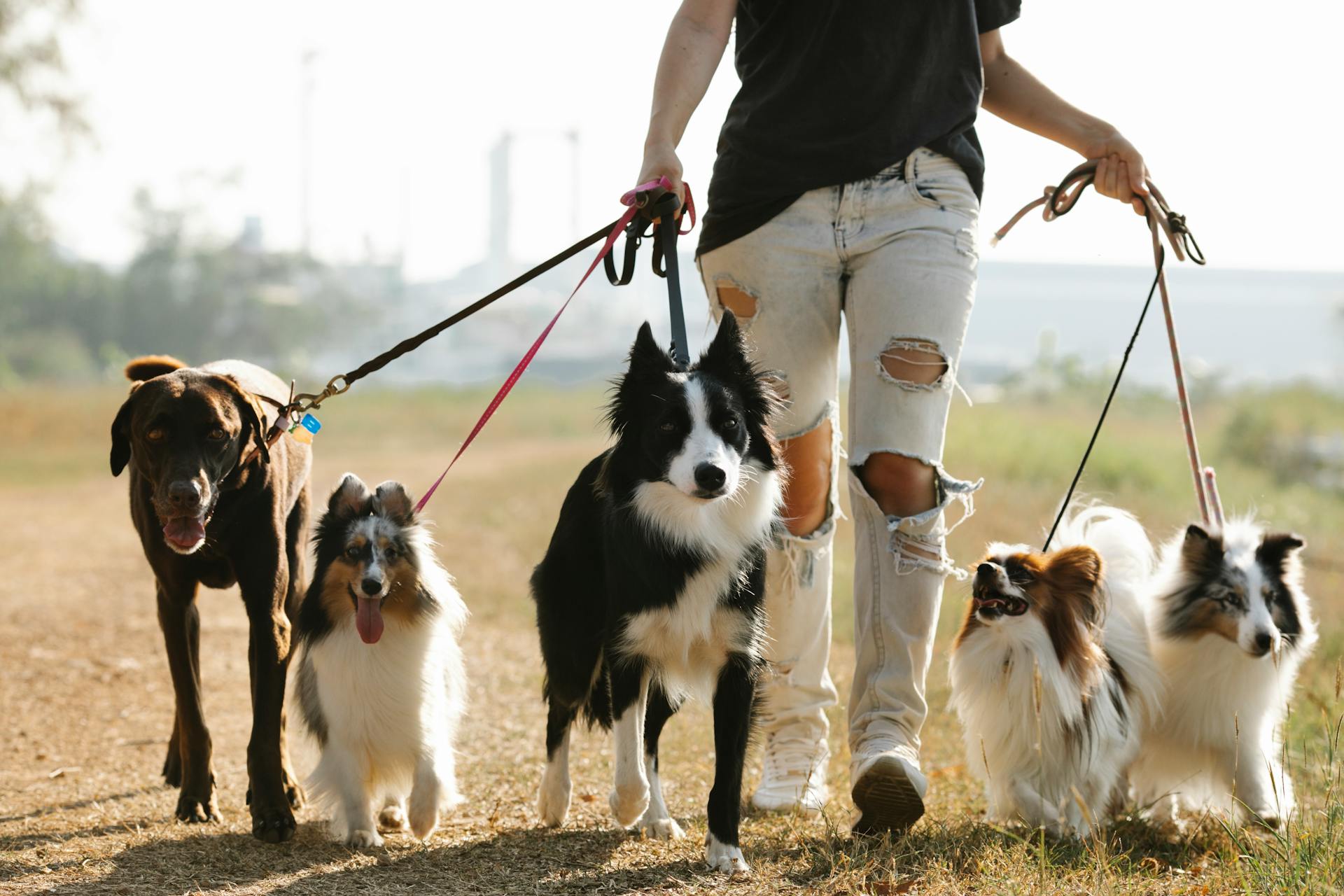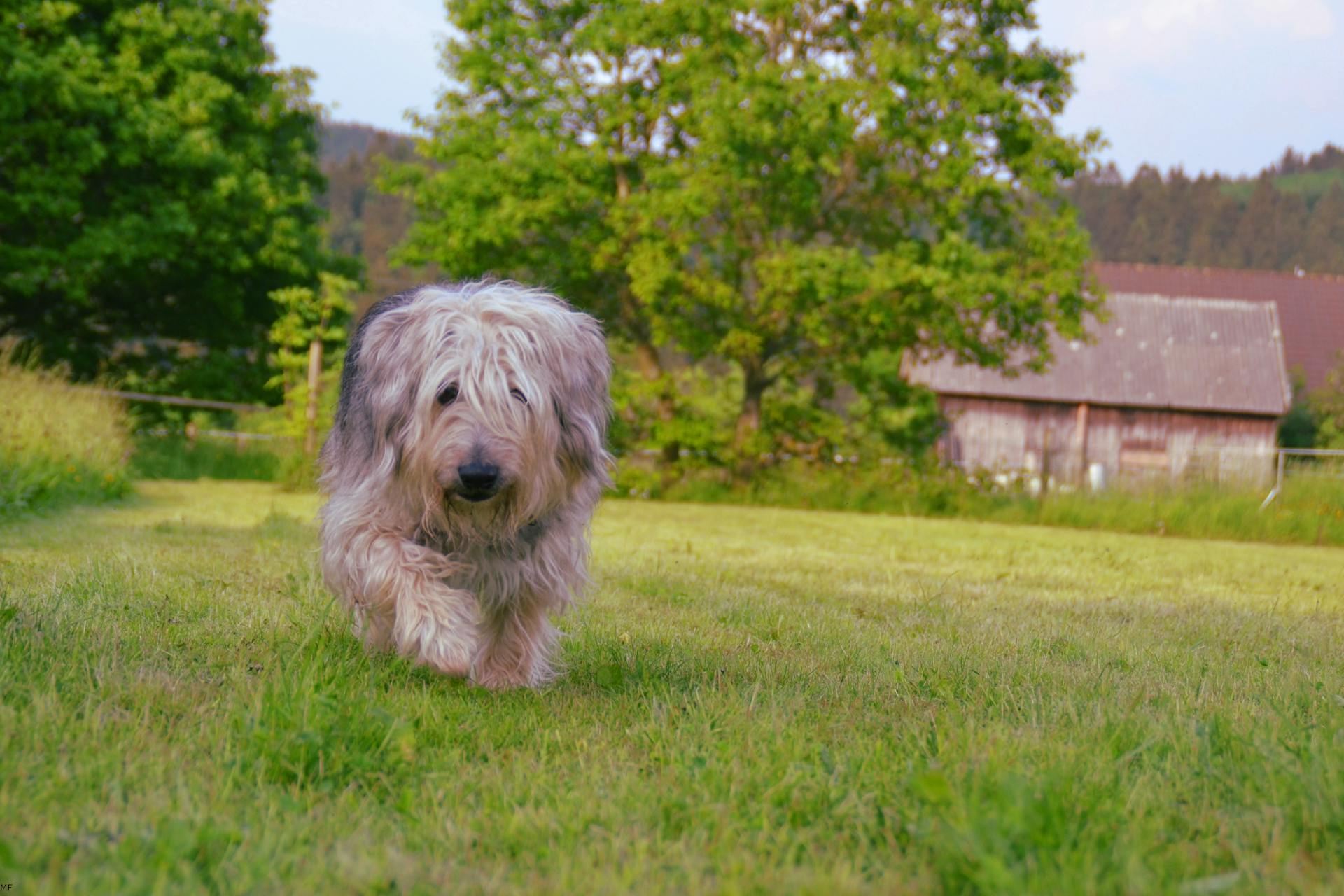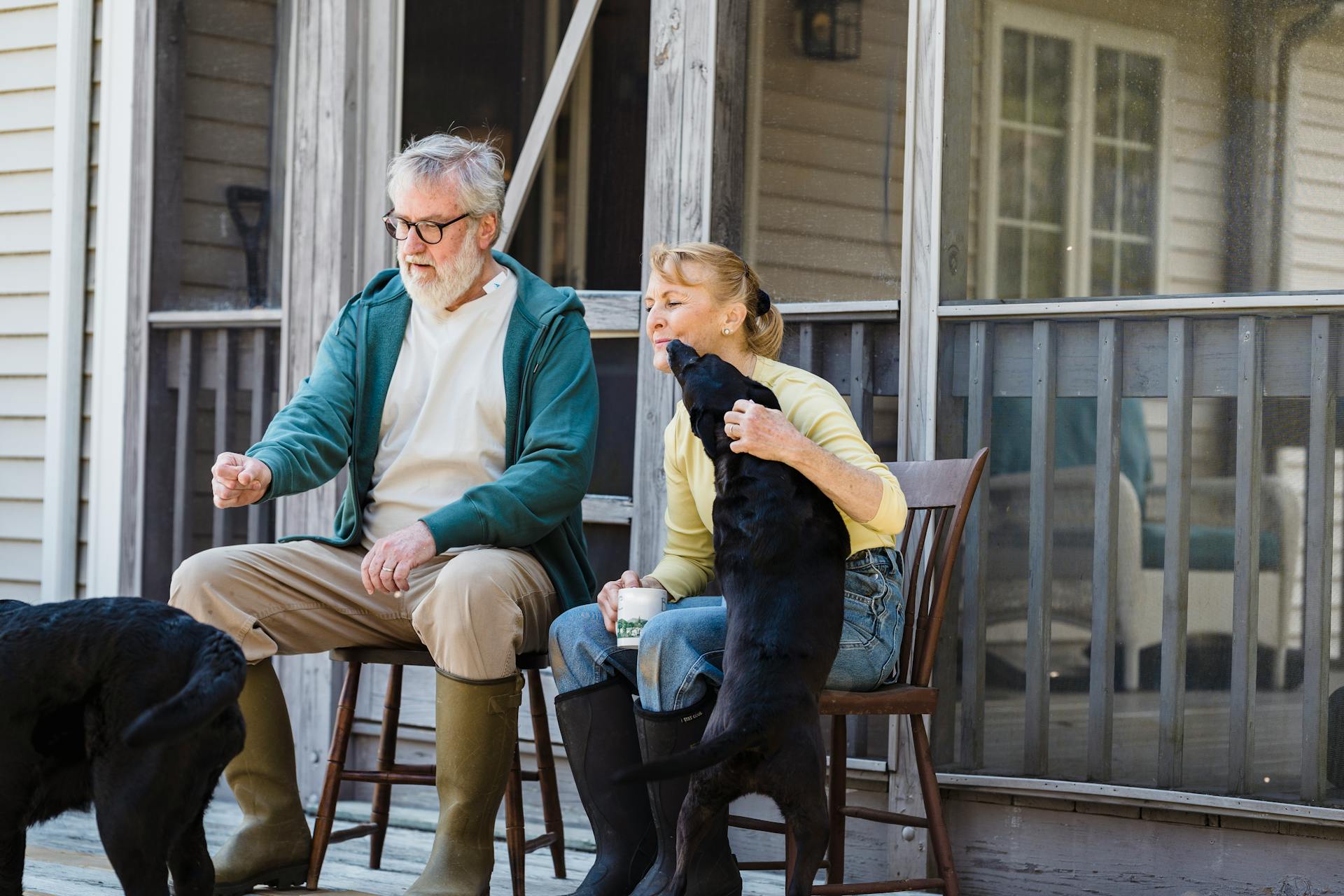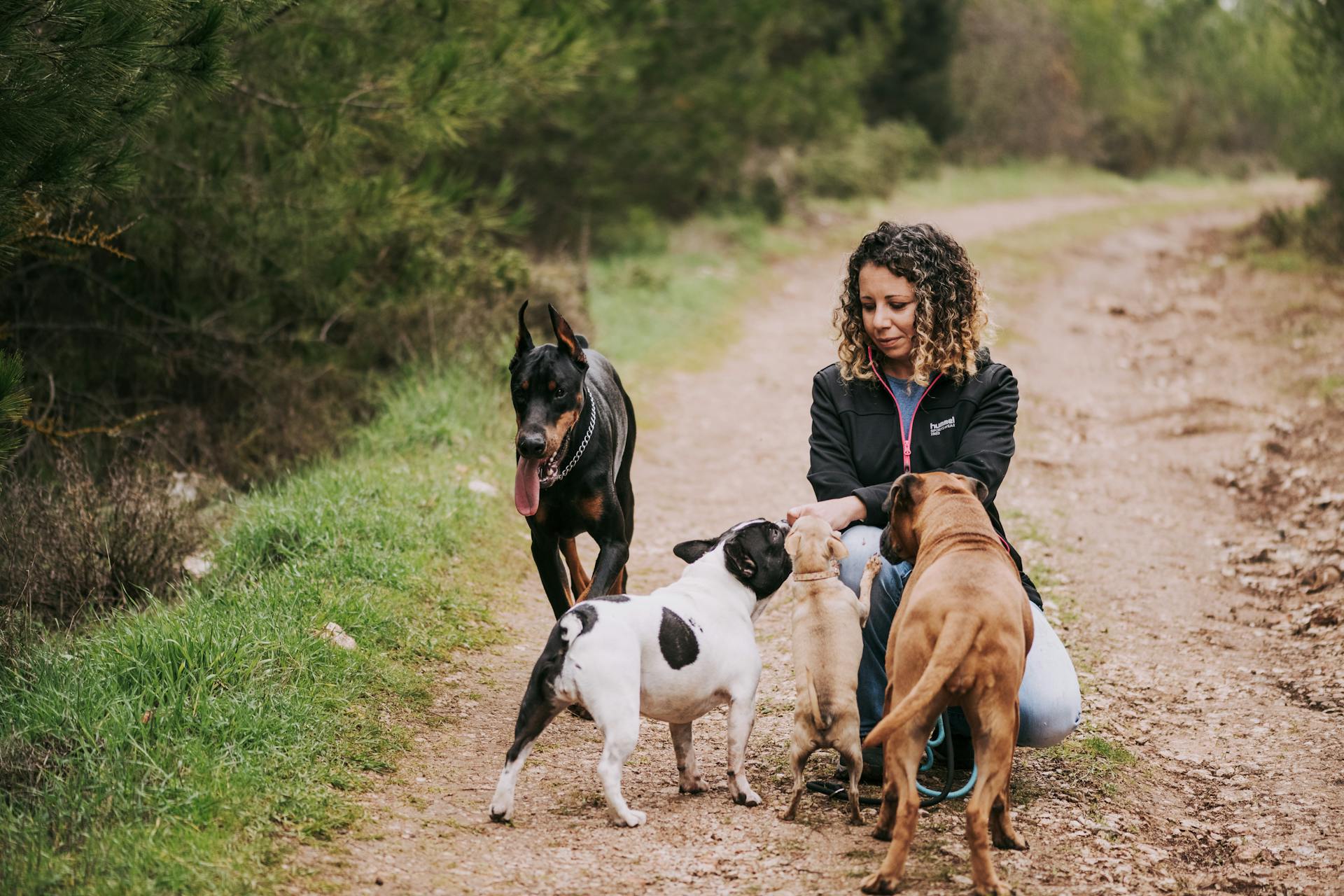
Food caching dogs are a common phenomenon, where dogs collect and hoard food items. This behavior can be frustrating for owners, but understanding the underlying reasons can help prevent it.
Dogs cache food due to their natural instincts as scavengers. In the wild, caching food helped their ancestors survive during times of scarcity.
To understand food caching, it's essential to recognize the triggers. For example, dogs may cache food due to boredom or excess energy.
Why Dogs Cache Food
Dogs cache food due to their natural instinct to bury things, inherited from their wolf ancestors who buried their kills to protect them from predators. This instinctual behavior is still present in domesticated dogs today.
Their ancestors' fear of starvation and need to protect food from predators has been passed down through generations, causing dogs to hide leftovers by burying them under the ground. This behavior is a leftover from their wild days, where burying food helped preserve it by regulating its temperature.
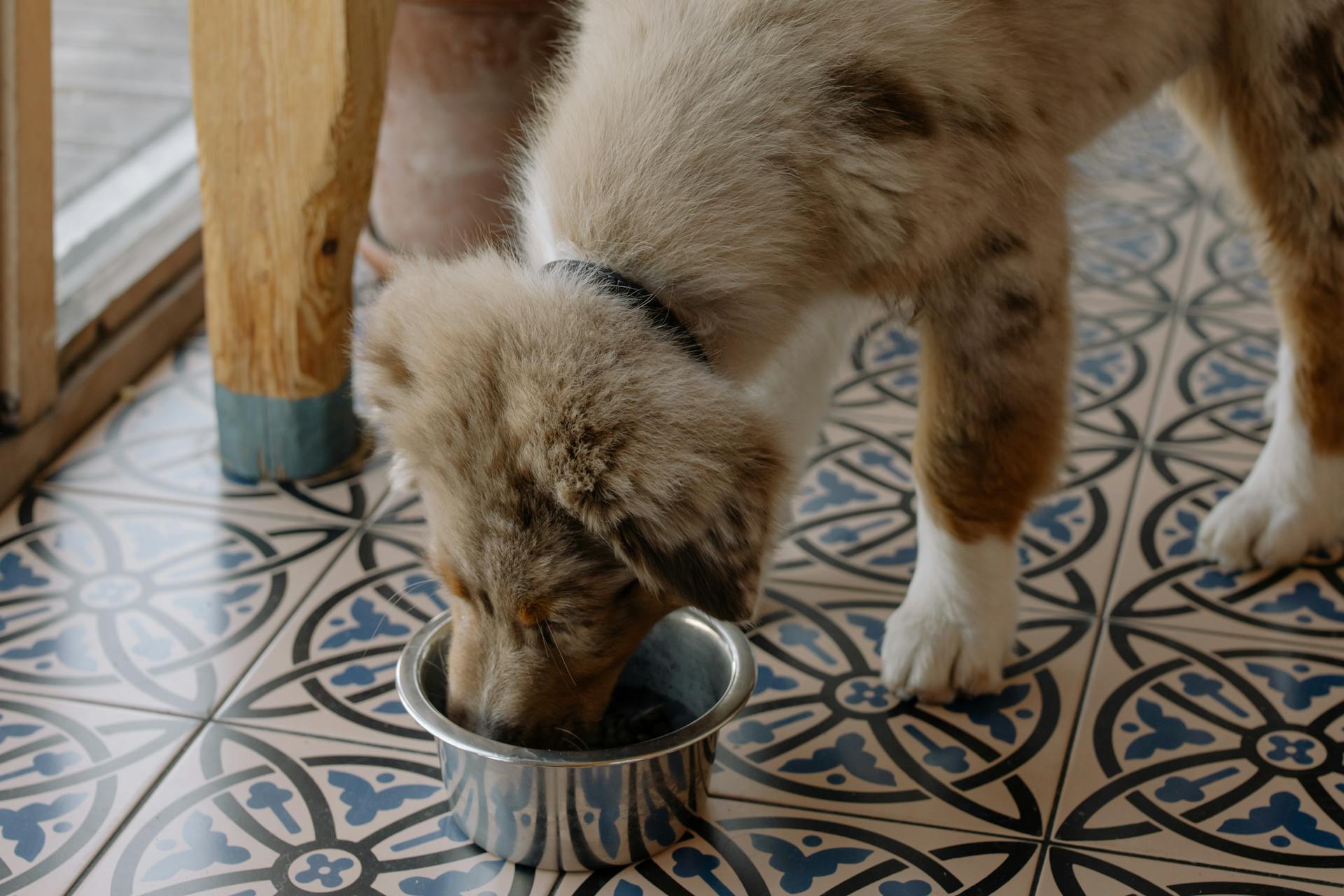
For many dogs, burying food is a source of pleasure, and it's not necessarily a sign of a problem. It's just their way of expressing their natural instincts, which were once essential for their survival in the wild.
Dogs may also cache food as a survival strategy to help their pack survive times of scarcity. By storing food underground, they can preserve it for later and ensure their pack has a steady food supply. This behavior is a testament to their pack mentality and desire to care for their family.
Reasons for Food Caching
Dogs cover their food due to an ancestral instinct known as "caching food".
This behavior is not unique to domesticated dogs, but rather a trait inherited from their wild ancestors, such as wolves, who bury their kills to protect them from other predators.
Burying food helps preserve it, as the ground regulates temperature, cooling it down and keeping it fresh.
For some dogs, burying food is a source of pleasure, and they might still want to bury leftovers even in a domestic setting.
Some dogs might exhibit this behavior instinctively, without any underlying issues, making it a harmless but potentially annoying trait.
Preventing Food Caching
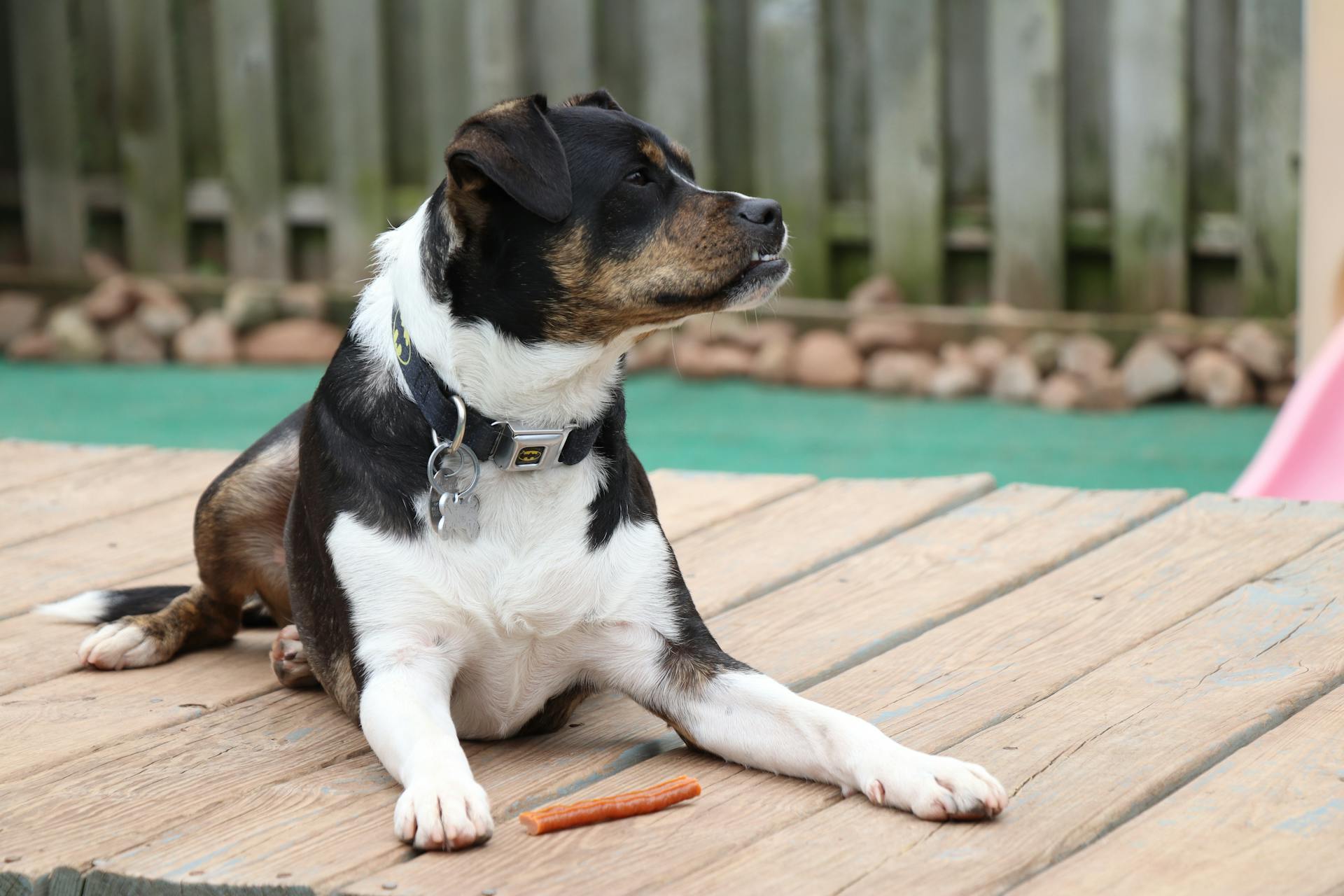
Feeding your dog too much can lead to food caching behavior. If you suspect this is the case, try reducing the amount of food you're giving your dog or exercising them before meals to curb the behavior.
To make burying harder, feed your dog in areas with hard surfaces or switch to a heavier bowl if they like to drag their food bowl around.
Consider giving your dog toys or chews to bury instead of food, which can help redirect their natural instinct to cache.
How to Prevent My Dog from Caching Food While Backpacking
If you're planning a backpacking trip with your dog, you might be concerned about their food caching behavior. Scolding your dog won't help, as it can make them more anxious.
One reason dogs cache food is that they're instinctively burying leftovers. If your dog is doing this, try feeding them less or exercising them right before meals to curb the behavior.
Consider giving your dog toys or chews to bury instead of food. This can redirect their instinct to cache items, making backpacking trips easier.
If your dog is hoarding food due to stress, reducing meal sizes will only worsen their anxiety. Instead, work to overcome food-related anxiety and reduce stressors.
You can also make your environment less conducive to caching by feeding your dog where they don't have access to soft dirt. This can make it harder for them to bury food.
Here are some additional tips to prevent food caching on backpacking trips:
- Mark the spots where your dog caches food and dig them up later yourself.
- Feed your dog in a location where they can't easily dig or bury food.
- Use a heavier bowl if your dog likes to drag their food bowl around.
By following these tips, you can reduce the weight of kibble you carry and minimize the risk of attracting bears.
Put Away Tempting Items for Your Dog
When you're out backpacking with your furry friend, it's tempting to give them treats or toys to keep them occupied, but this can actually contribute to the problem of food caching. Consider keeping these items out of sight or reach of your dog.
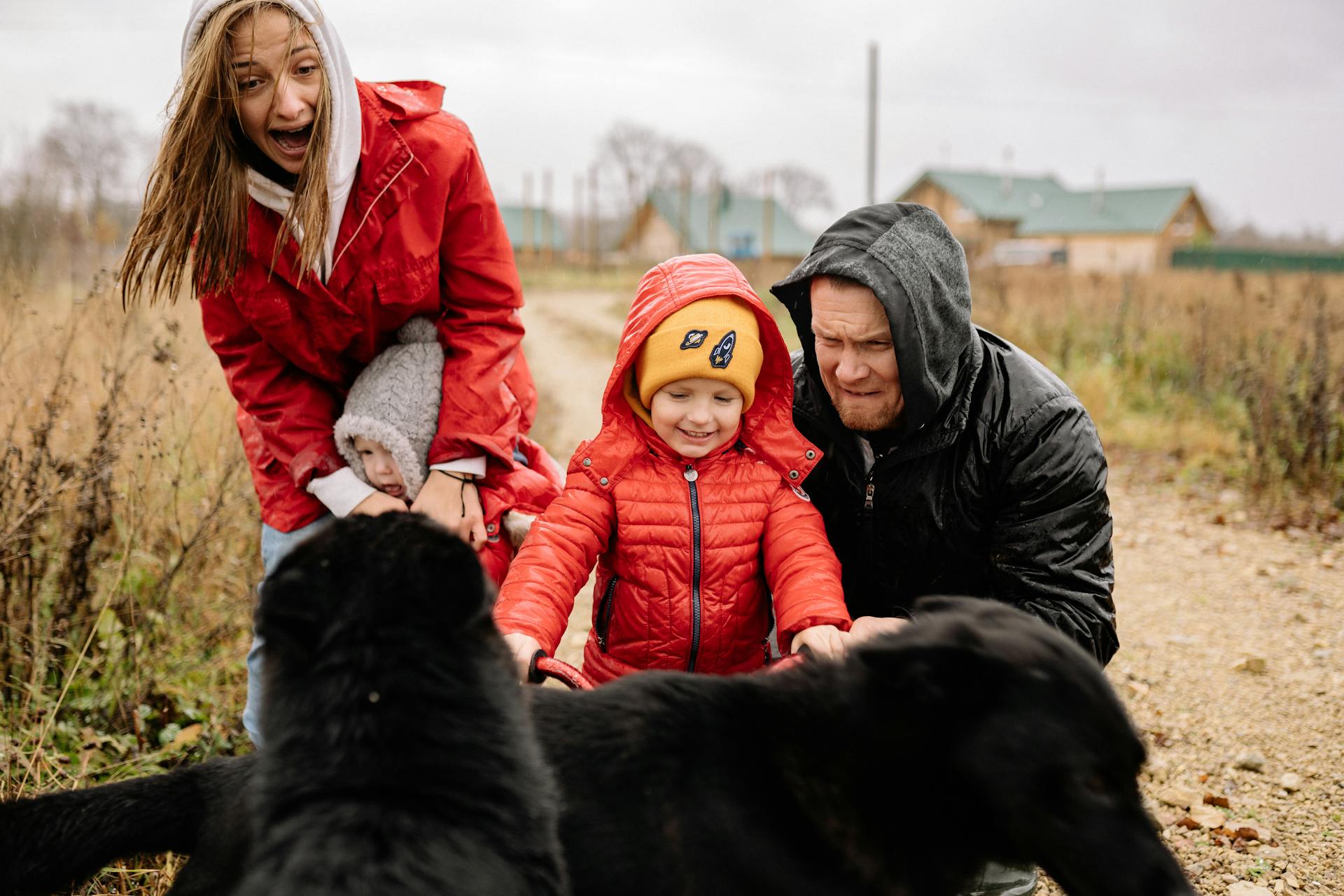
If you do need to give your dog treats or toys, it's best to do so under close supervision, as suggested by Naito. This way, you can ensure your dog doesn't get the idea that it's okay to hide things.
Feeding your dog too much can also lead to food caching. If you think your dog is getting enough to eat, think again! Your dog might be trying to bury items because they're full and want to save them for later.
Here are some items to keep out of sight or reach of your dog when backpacking:
- Treats
- Toys
- Bones
Understanding Food Caching Behavior
Dogs bury food because it's in their nature - they have a natural drive to hoard and guard their food and possessions, inherited from their wild ancestors.
This behavior is not necessarily about being naughty, but rather about following their instincts.
Some dogs bury food due to anxiety or stress, just like their wild ancestors did to keep food safe until the next meal.
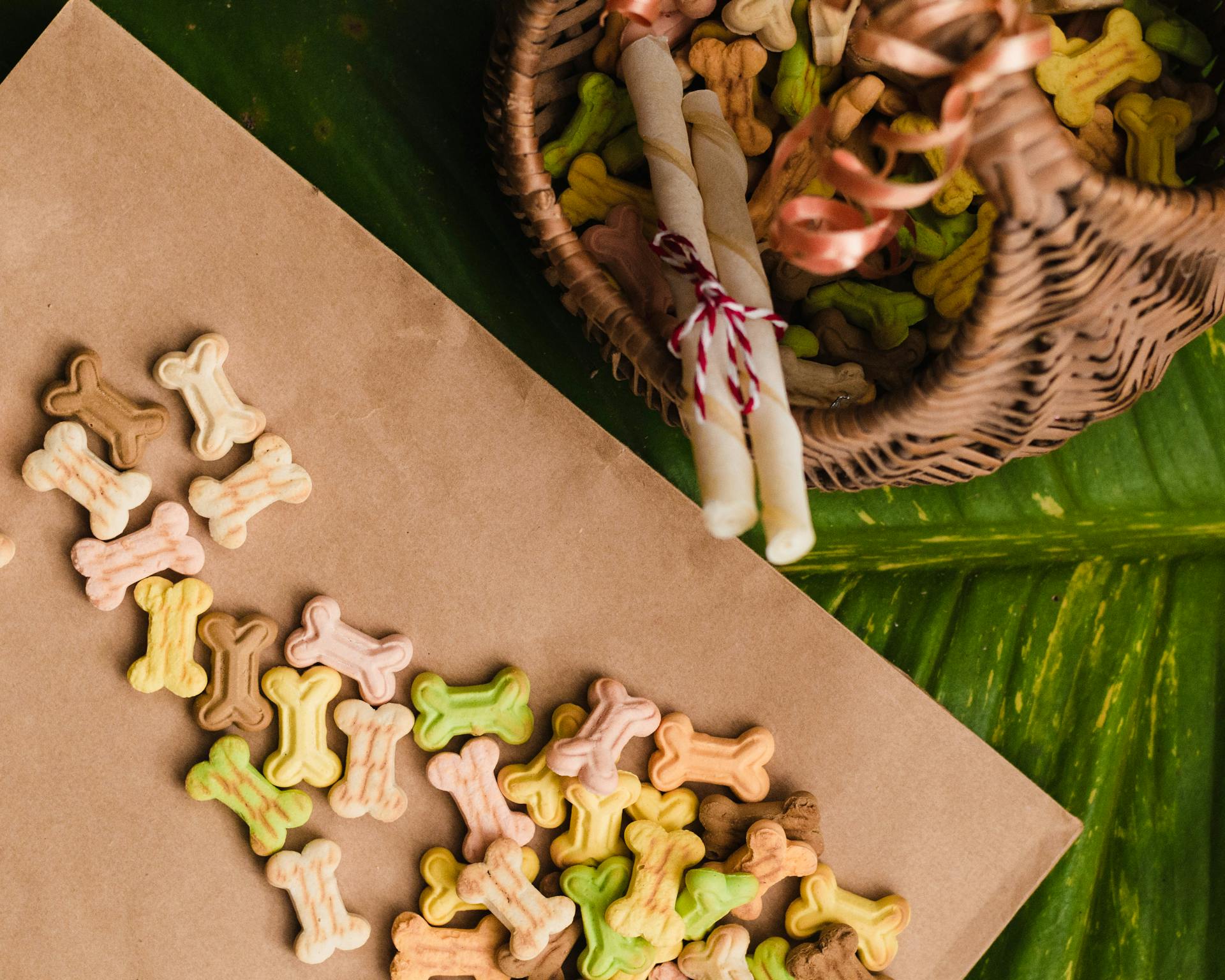
This can be a response to introducing a new pet to the home, or a sign of past abuse or neglect.
Dogs may also bury food because they fear starvation and want to protect their food from predators.
Food caching can be a problem when backpacking with your dog, as it can attract bears and make you carry more weight in kibble than your dog needs.
To understand why your dog is caching food, consider their background and environment - are they anxious or stressed, or are they simply following their instincts?
Here are some possible reasons why your dog might be caching food:
- Natural instinct to hoard and guard food
- Anxiety or stress
- Fear of starvation
- Protecting food from predators
Managing Food Caching
Managing food caching in dogs can be a challenge, especially if you're a backpacker who wants to minimize your dog's food waste and prevent attracting bears. Scolding your dog for caching food can make her more anxious, so it's best to find alternative solutions.
Marking the spots where your dog caches food and digging them up later can be a good temporary fix, but it's better to stop the behavior altogether. This can be achieved by providing your dog with enough food and exercise to satisfy her natural instincts.
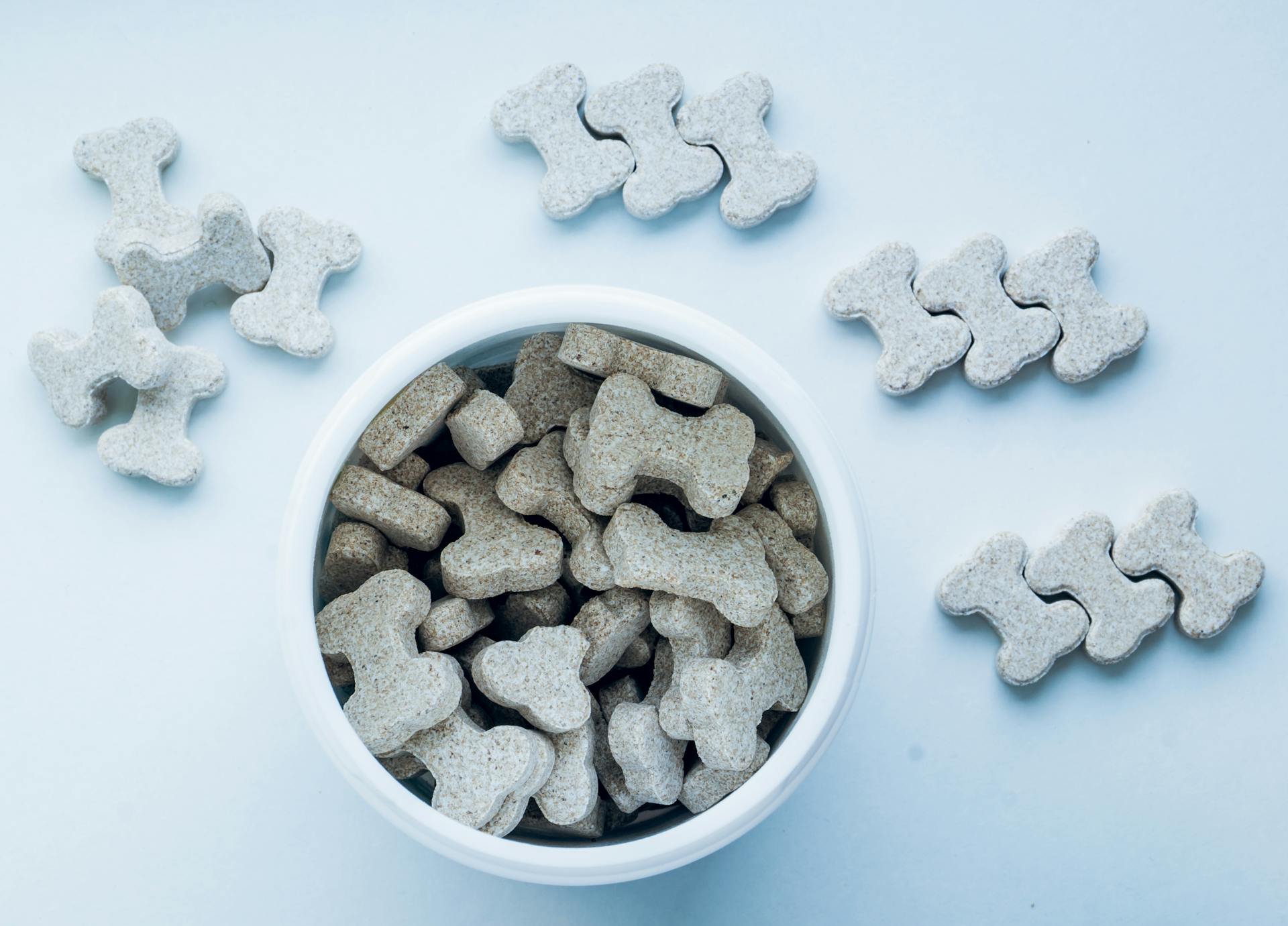
For some dogs, caching food is an instinctual behavior that's hard to break. In the wild, wolves bury their kills to preserve them, and this behavior can be triggered in modern dogs by the act of digging holes. This behavior is generally harmless, but it can be annoying.
To manage food caching, it's essential to understand the reasons behind it. Some of the reasons why dogs try to cover their food include:
- Instinctual behavior to preserve food
- Desire to hide food from others
- Enjoyment of digging holes
By understanding the motivations behind your dog's caching behavior, you can take steps to address the underlying issues and prevent food caching in the first place.
Sources
- https://furballstory.com/blogs/training-and-behaviour/burying-a-common-dog-behaviour
- https://www.dogster.com/dog-nutrition/why-do-dogs-bury-food
- https://www.woofblankets.com/blogs/woof-diaries/why-dogs-cover-food
- https://www.fluther.com/150329/how-do-i-stop-my-dog-from-caching-food-when-we/
- https://www.akc.org/expert-advice/advice/why-is-my-dog-hiding-things/
Featured Images: pexels.com
